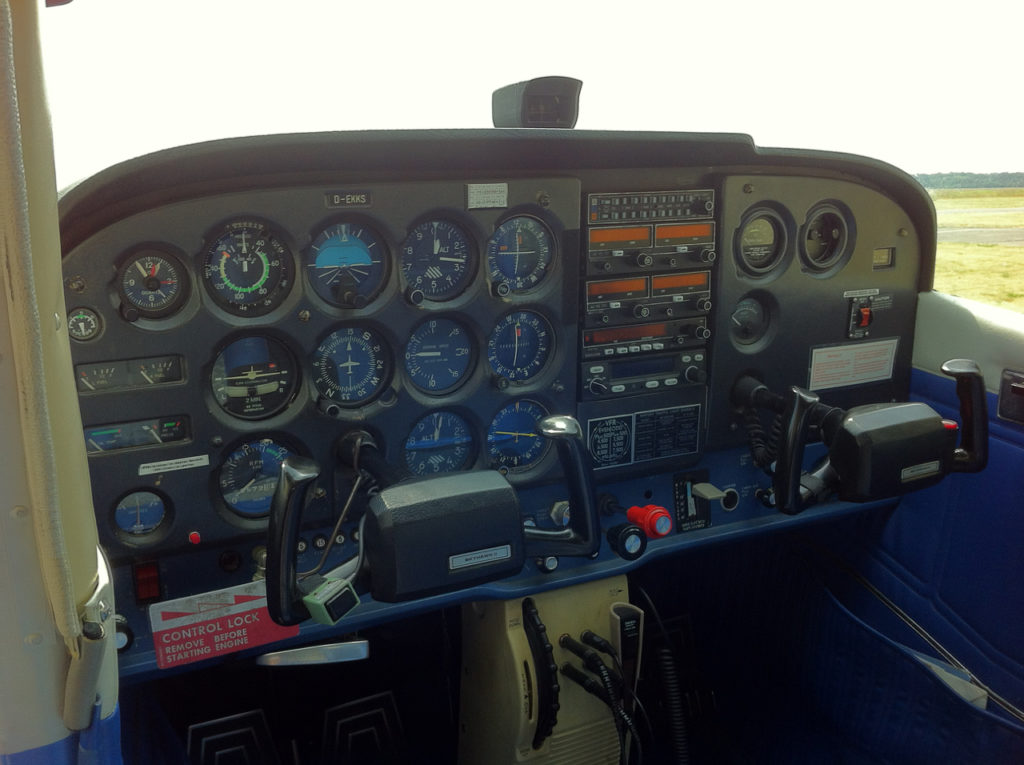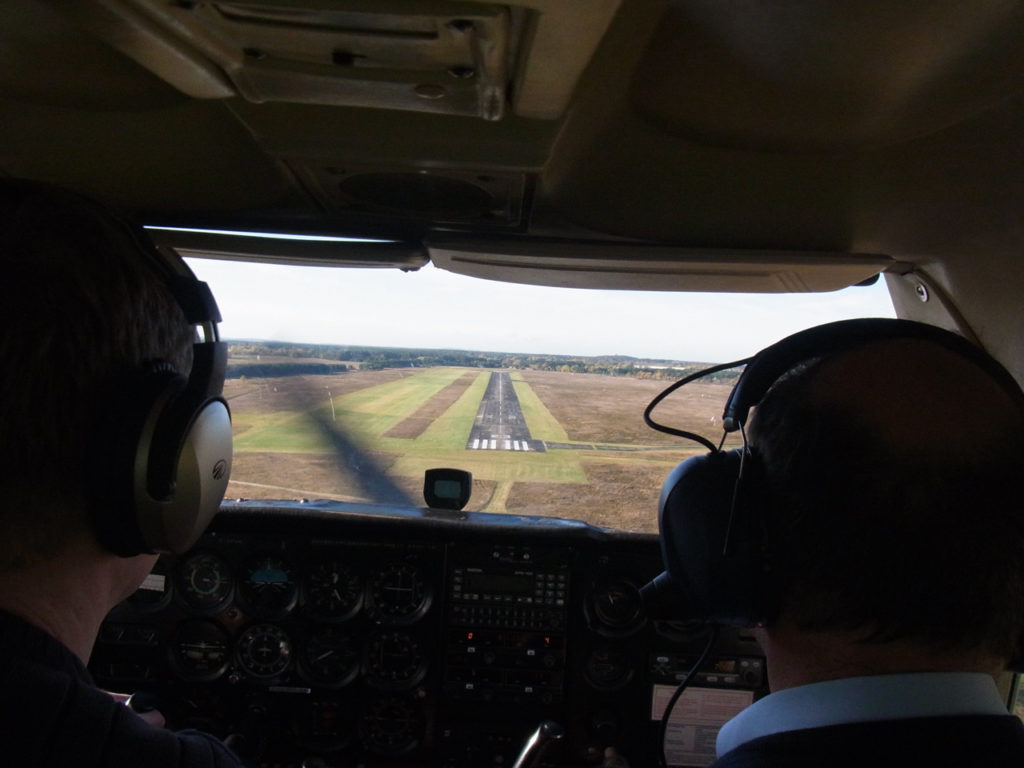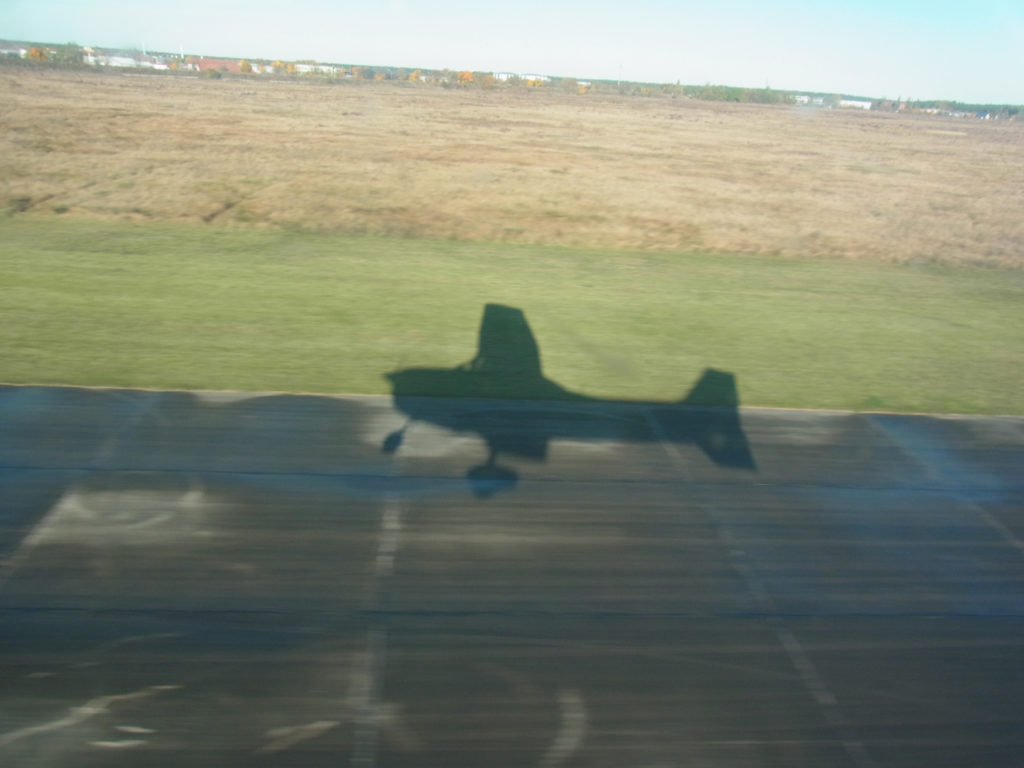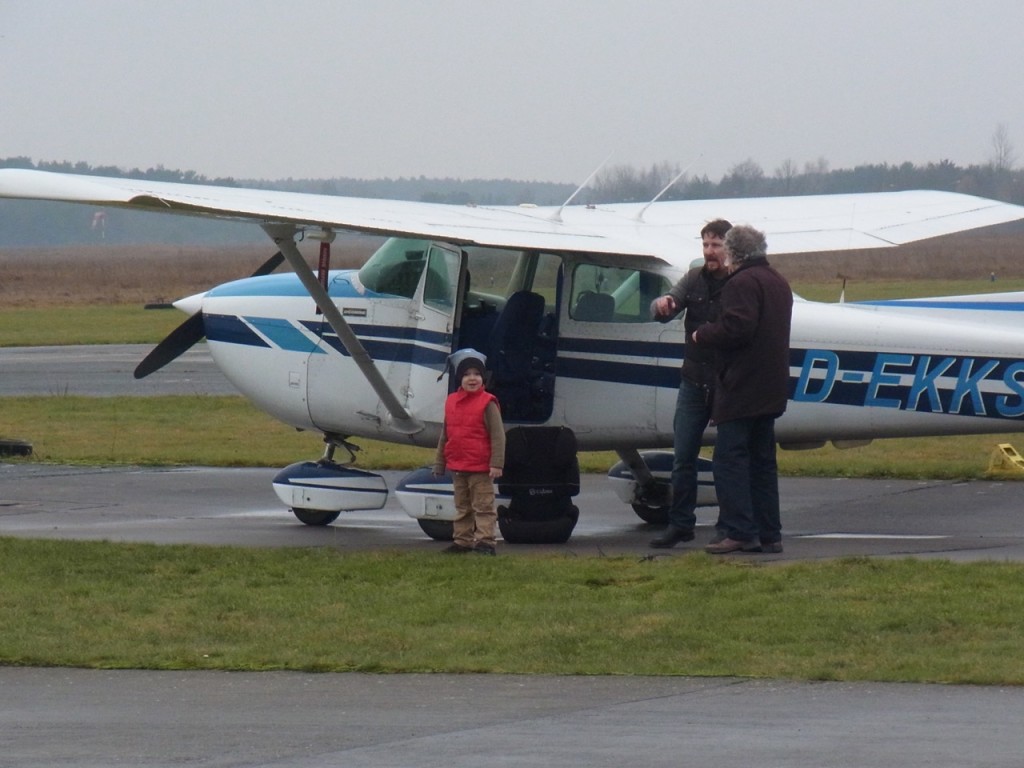Bianual check ride
Visibility: Ok
Temperature: -5°C
QNH: 1030hPa (high pressure)
Location: EDAY (Strausberg)
Equipment: Cessna 172 (D-EKKS)
Private pilots have to take check rides with a flight instructor every other year. This is to make sure that they do not take on funny habits – or that they stick to the ones their instructors taught them.
The day at the office is light, the weather is good and so I decide to fly a Cessna instead of my desk today.
When I leaf through my logbook, I realize that it has been over a year since I last flew „Kilo Sierra“. I read up on the most important check lists and speeds. I also familiarize myself with the cockpit again. I have made it a habit to take pictures of the instrument panels of all the aircraft that I fly. Studying the photos helps me to remember the differences between the planes.

Flying with a passenger
When I arrive at the flight school, a new student is finishing a theory lesson. The flight instructor asks me if he can come with us. Of course he can!
I remember how much I appreciated being a passenger on numerous occasions during my own training. It is motivating and great fun. The experienced instructor knows this.
Flight planning
Our trip today will be a triangle. EDAY-EDAV-EDON and back to EDAY. We will do touch-and-go’s in EDAV, air work on the way to EDON and navigation training on the way back. EDON will be a waypoint for is today, not a stop.
Easy does it
We are in a weather inversion. The visibility is not great but gets much better above about 2.200 feet. „Kilo Sierra“ and I are still friends. On final approach into EDAV, I’m a bit too fast for the instructors taste. Other than that we are both happy.

The sun is shining. By the time we start making our way over to EDON, it is pretty much in our face. Combined with the climbing inversion, this makes for very limited visibility forward.
The flight instructor is keeping the eyes outside, I’m concentrating on the navigation and using the occasion to practice some instrument skills. An unexpected extra on this trip.
When we are done, I have a little more than one hour for my log book. I am familiar with „Kilo Sierra“ again and I think my passenger had a good time, too. That’s a successful day!
To be continued…














